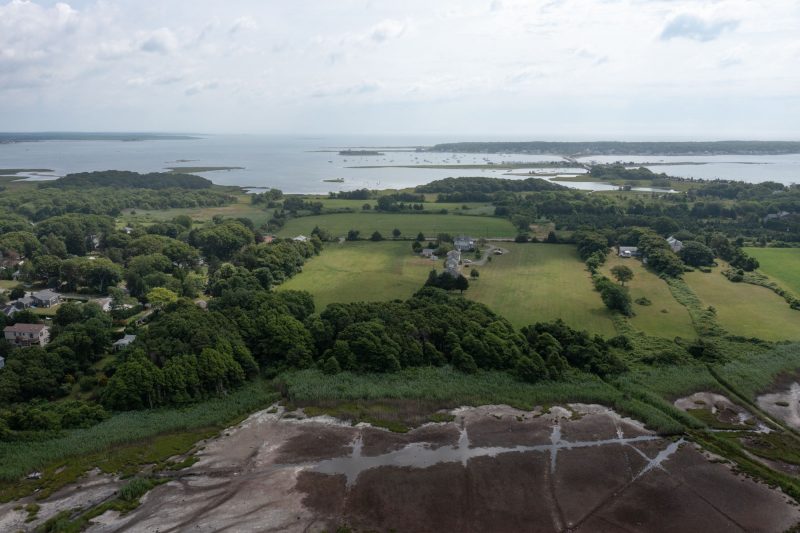Buzzards Bay Coalition Takes Steps to Protect Salt Marshes in Fairhaven

Salt marshes, these lush grass meadows teeming with shorebirds, are iconic features of the Buzzards Bay coast and provide other environmental benefits. The ecologically productive coastal wetlands are important because they protect properties from storm surges, remove nutrient pollution from the water and carbon from the atmosphere, as well as provide critical habitats for fish, shellfish, and birds. Despite existing wetland protection laws, these beautiful, iconic and critically important parts of Buzzards Bay are being lost at an alarming rate to development, pollution and now accelerated sea level rise associated with climate change.
Coastal habitats like these are capable of migrating inland over time as long as there is nothing blocking this process. Buzzards Bay’s saltmarshes need soft, low lying, and gently-sloping natural land areas immediately adjacent to their landward edge to sustain themselves over time. Unfortunately, much of this land has been developed with houses and infrastructure preventing salt marshes from adapting. Some such natural land still exists along the Bay. It is becoming more and more important that these areas remain in their natural state and are not hardened by structure and barriers as sea levels rise and coastal development continues.
Buzzards Bay Coalition prioritizes protection of these types of land when selecting land conservation. The Coalition’s recent acquisition of the nine acre Salt Winds Farm and the 27 acre Widemarsh Farm in Fairhaven will help protect valuable adjacent salt marshes by giving them protected space to move to over time. Both of these projects also protect important local farmland, wildlife habitat and the beautiful character of the unique agricultural landscape of Massachusetts’ South Coast. In the case of Salt Winds, the Coalition also hopes to open a public access trail once funding is identified.
Today, Buzzards Bay’s vital salt marshes are disappearing under the accelerating pressure of climate change-driven sea level rise. At ten salt marsh study sites located along the Bay coastline, an analysis found that 9% of the marsh area was lost in the 18 years between 2001 and 2019, indicating that sea level rise is already overwhelming our marsh’s natural resilience. As the water rises, marsh plants move with the saltwater into adjacent uplands and convert them to marsh. Buzzards Bay Coalition is actively working to ensure that these salt marshes can expand as sea levels rise by preserving land from development that will block the natural flow of these salt marshes in response to climate change.